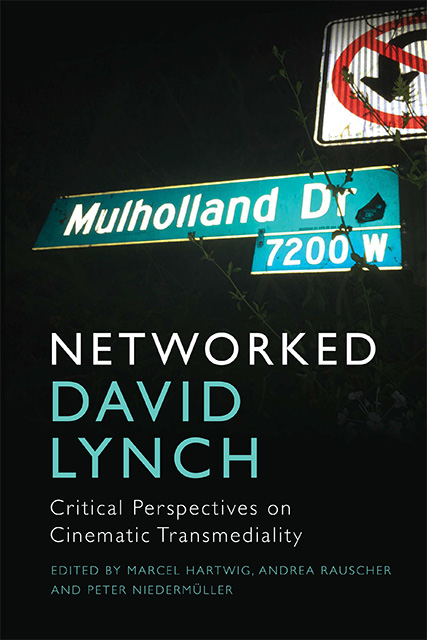Book contents
- Frontmatter
- Contents
- List of Figures
- Notes on Contributors
- Introduction: Entering Lynchtown
- Part I Approaching Intertexts
- Part II Twin Peaks as Transmedia Network
- Part III David Lynch's Transmedia Aesthetics
- Part IV Videographic Criticism of David Lynch’s Cinematic Work
- Conclusion: Leaving Lynchtown
- Index
Introduction: Entering Lynchtown
Published online by Cambridge University Press: 19 October 2023
- Frontmatter
- Contents
- List of Figures
- Notes on Contributors
- Introduction: Entering Lynchtown
- Part I Approaching Intertexts
- Part II Twin Peaks as Transmedia Network
- Part III David Lynch's Transmedia Aesthetics
- Part IV Videographic Criticism of David Lynch’s Cinematic Work
- Conclusion: Leaving Lynchtown
- Index
Summary
During the 1980s and early 1990s, David Lynch redefined his status as cult auteur of midnight movies such as Eraserhead (1977) and of ambitious art-house productions like The Elephant Man (1980). Following the international success of Blue Velvet (1986) and Wild at Heart (1990), he was discussed as one of cinema's defining postmodernists, along with Peter Greenaway, Pedro Almodóvar, Lars von Trier, the French ‘cinéma du look’ and US independents from Jim Jarmusch to Quentin Tarantino. His references to artists like Francis Bacon and Edward Hopper as well as cult classics like The Wizard of Oz (1939) and rock ballads by Roy Orbison crossed the border between high art and pop art and closed the gap between the reflections of film scholars in academia and the coolness of everyday cultural knowledge. At the same time, he expanded the canvas of cinema by composing and producing music together with Angelo Badalamenti and Julee Cruise, from experimental industrial sounds to sublime pop, by staging performances like the Industrial Symphony Vol. 1 (1990), and by entering art galleries with his sculptures, paintings, photography and designs.
Instead of directing commercials and video clips occasionally, the (net) work(ing) across media became one of the defining trademarks of Lynch's open-ended oeuvre. In contrast to the autobiographical limitations and the distanced critical interventionist politics of traditional auteurism, ‘Lynchtown’ (Chion 1995) offered aesthetic abundance and multi-layered surfaces for participatory involvement. The TV series Twin Peaks (1990–2), created by David Lynch and Mark Frost, eventually introduced a new ‘Golden Age of Television’ (Thompson) for many critics and scholars. In hindsight, media scholar Henry Jenkins regarded the series to be, ‘the cutting edge of what a decade later would be called transmedia entertainment’ (Jenkins 2020: 33). Taking its cue from perspectives such as the above, Anne Jerslev, in her latest study Blurred Boundaries (2021: 3), takes a closer look at the overlap between Lynch's work as an artist and his work as a director by asking about ‘the aesthetic, thematic and affective possibilities [his] artistic approach entails’. There she traces the continuities that exist between, for example, Lynch's fascination with textures and the ‘spatial disorientation’ (ibid.: 65) he creates in close-ups on what Chion calls ‘microreliefs’ (ibid.) across different media, also used in the opening of Twin Peaks: Fire Walk with Me (1992).
- Type
- Chapter
- Information
- Networked David LynchCritical Perspectives on Cinematic Transmediality, pp. 1 - 10Publisher: Edinburgh University PressPrint publication year: 2023



